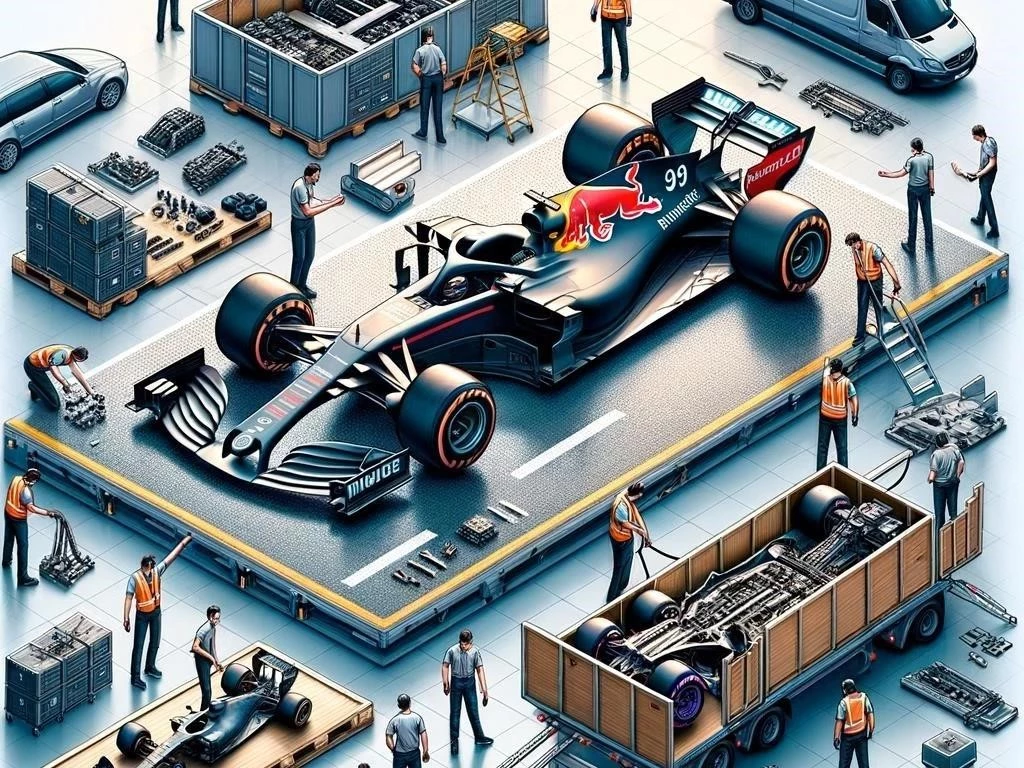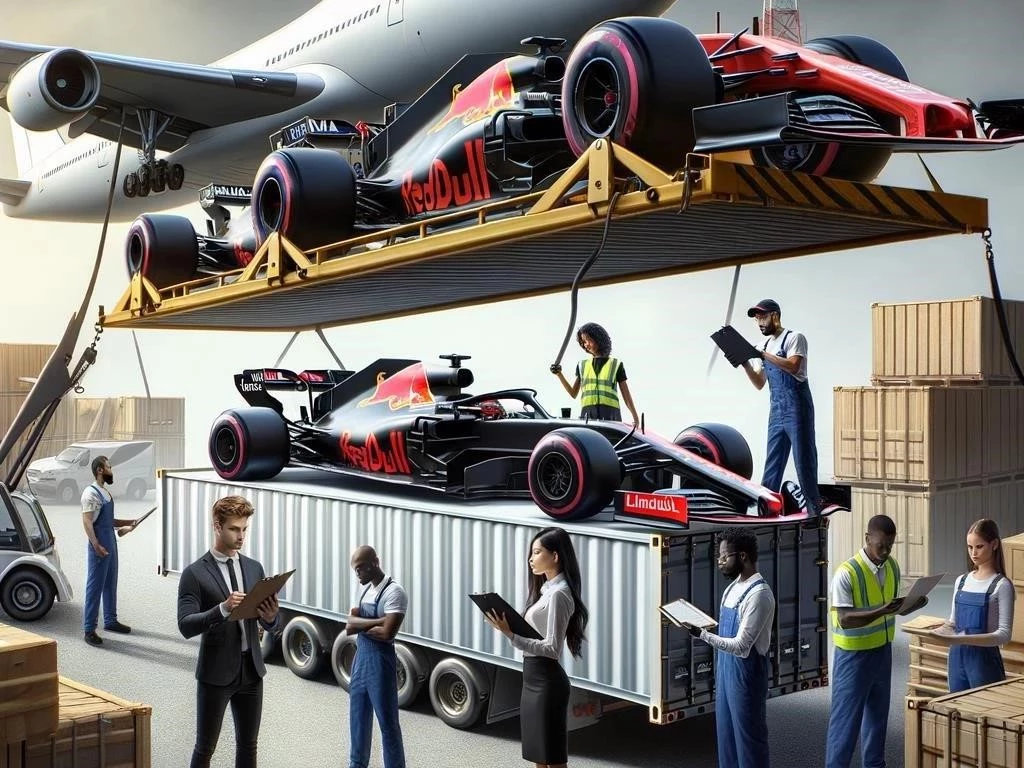How Do They Ship F1 Cars?
F1 transportation involves meticulous planning, utilizing specialized transport methods ensuring secure vehicle handling, compliance with shipping regulations, and efficient logistics for race day preparation.
F1 transportation is a crucial aspect of the motorsport industry, ensuring that race cars and equipment arrive safely and on time for each event. The logistics involved in moving these high-performance vehicles are complex, requiring specialized transport methods tailored to meet the unique needs of each race team. From loading vehicles into secure car crates to selecting the appropriate shipping methods, every detail matters. Teams must navigate international shipping challenges, customs clearance, and shipping regulations, all while adhering to strict timelines. Effective communication and coordination between team logistics, freight services, and transport providers are essential for successful race day preparation. Understanding these processes is vital for ensuring competitive performance on the track.
The Importance of Race Car Logistics
Race car logistics play a vital role in the success of Formula 1 teams, ensuring that every piece of racing equipment is delivered safely and on time. These logistics encompass various aspects, including transportation planning, vehicle handling, and secure packaging. Efficient logistics are essential for maintaining the integrity of sophisticated race cars, as even minor delays can impact performance. Furthermore, logistics teams coordinate closely with freight services to manage air freight, road transport, and sea freight options, optimizing costs and delivery times. With the added complexity of international shipping and customs clearance, having a robust logistics strategy is crucial. This enables teams to focus on race day preparation and competitiveness on the track.
Shipping Methods for F1 Cars
Shipping methods for F1 cars are carefully selected based on the race location, urgency, and type of equipment being transported. Air freight is often the fastest option, allowing teams to quickly move race cars and essential parts across vast distances. However, this method can be costly. Road transport is frequently utilized for shorter distances, providing flexibility and timely delivery. Sea freight is another method, ideal for transporting multiple vehicles and large quantities of racing equipment, although it requires more time. Each method comes with its own advantages and challenges, making it crucial for teams to choose the most efficient shipping methods to ensure their vehicles arrive in perfect condition for race day.
3.1 Air Freight
Air freight is a preferred shipping method for F1 cars due to its speed and efficiency. Teams rely on this mode of transport to ensure that their vehicles and critical parts arrive at international circuits promptly. Specialized cargo planes are often used, capable of accommodating car crates designed for secure packaging and protection during transit. The logistics of air freight involve meticulous planning, including route selection and coordination with airport authorities. Moreover, teams must comply with strict shipping regulations and customs clearance processes to avoid delays. While air freight can be more expensive than other methods, its reliability and speed make it an essential component of race day logistics for Formula 1 teams.
3.2 Road Transport
Road transport is a vital shipping method for F1 cars, particularly for events held within a reasonable distance. This method provides flexibility and convenience, allowing teams to transport vehicles, spare parts, and racing equipment directly to the venue. Specialized transport trucks are equipped with secure packaging and vehicle handling systems to ensure the safety of the cars during transit. These vehicles are designed to accommodate the unique dimensions and weight of race cars, providing optimal protection. Additionally, road transport enables teams to adjust their timelines easily, ensuring timely arrival and efficient setup for race day preparation. Overall, this method remains a crucial aspect of F1 logistics, complementing other shipping methods.
3.3 Sea Freight
Sea freight is a strategic shipping method for transporting F1 cars, especially when moving multiple vehicles and large quantities of racing equipment. This mode of transport is often used for international shipments, providing an economical solution compared to air freight. Teams utilize specialized shipping containers, ensuring secure packaging and protection against environmental factors during transit. While sea freight takes longer than air and road transport, it is ideal for planning well in advance of race events. Logistics teams meticulously coordinate shipping schedules, customs clearance, and unloading processes to ensure seamless delivery. Ultimately, sea freight remains an essential component of race car logistics, enabling teams to transport their assets efficiently across global circuits.
Vehicle Handling and Secure Packaging
Vehicle handling and secure packaging are critical components in the shipping process of F1 cars. Proper handling ensures that each vehicle arrives in pristine condition, ready for race day. Specialized personnel are trained in the best practices for loading, unloading, and transporting these high-performance machines. Secure packaging includes utilizing custom car crates designed to protect against vibrations, impacts, and environmental factors during transit. Additionally, teams often implement advanced strapping methods to minimize movement within the crate. This meticulous approach to vehicle handling not only safeguards the integrity of the race cars but also streamlines the logistics process, allowing for efficient setup and preparation at each race venue around the world.
Customs Clearance and Shipping Regulations
Customs clearance and shipping regulations are essential considerations in the transport of F1 cars, ensuring compliance with international laws. Each country has specific import and export requirements that must be adhered to, including documentation and duties. Teams must prepare detailed paperwork, including invoices and certificates of origin, to facilitate smooth customs processes. Failure to comply with these regulations can lead to delays and unexpected costs. Moreover, logistics teams work closely with customs brokers to navigate complex regulations efficiently. This collaboration is vital for avoiding potential pitfalls and ensuring timely delivery. Ultimately, understanding customs clearance procedures is crucial for successful race car logistics and maintaining operational efficiency in the competitive world of F1.

Team Logistics and Race Day Preparation
Team logistics and race day preparation are integral to the successful shipping and handling of F1 cars. Each race event requires meticulous planning to ensure that all equipment, including cars and tools, arrive on time. Logistics teams coordinate transportation schedules, monitor shipping methods, and communicate with freight services to optimize efficiency. Upon arrival, teams quickly set up their pit areas, unpack racing equipment, and conduct thorough inspections of the cars. This preparation is crucial for identifying any issues that may arise and addressing them before the race. Effective logistics management ensures that every aspect is accounted for, allowing teams to focus on performance and strategy during the highly competitive race day.
The delivery process of racing equipment for F1 cars involves a complex interplay of logistics, transportation methods, and meticulous planning. Each aspect, from selecting the appropriate shipping methods to ensuring secure packaging, plays a vital role in the overall efficiency of the operation. Effective coordination between teams, freight services, and customs authorities ensures that all equipment arrives on time and in optimal condition. As teams prepare for race day, their focus on logistics management facilitates a smooth transition from transport to track. Ultimately, understanding the intricacies of the delivery process is crucial for maintaining competitive performance, as every detail contributes to the success of the racing endeavor.








